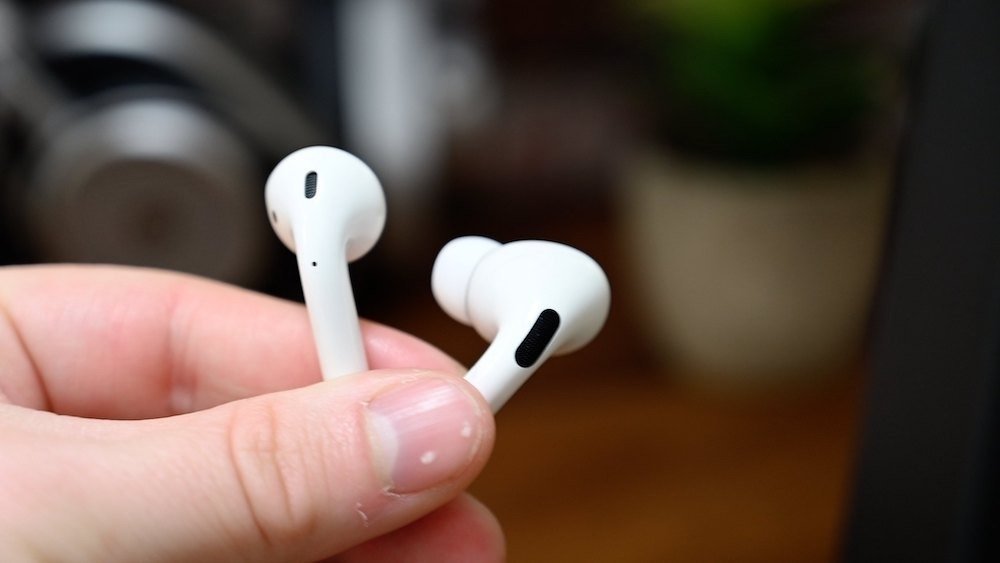Apple researchers use AirPods to estimate user respiratory rates
Apple is delving further into wearable-based health monitoring, and in a research paper published Wednesday details the promise of estimating respiratory rates with the help of AirPods.

Posted to Apple's Machine Learning Research webpage and spotted by MyHealthyApple, "Estimating Respiratory Rate From Breath Audio Obtained Through Wearable Microphones" covers methods of monitoring respiratory rates on exertion in a healthy population using audio data gleaned from AirPods.
Apple hopes to prove that readily-available, "aesthetically acceptable" and relatively affordable devices like AirPods can be used to estimate respiratory rates and track cardio-respiratory fitness.
The paper does not name a specific AirPods product, but does make clear that breath audio picked up from the wearable's microphones was used to inform a learning network model with the goal of distinguishing normal and heavy breathing. Respiratory rate was estimated by detecting breath sound patterns, the study says.
"While sensors such as thermistors, respiratory gauge transducers, and acoustic sensors provide the most accurate estimation of a person's breathing patterns, they are intrusive and may not be comfortable for everyday use. In contrast, wearable headphones are relatively economical, accessible, comfortable, and aesthetically acceptable," Apple's paper reads.
Apple's study focuses on estimating respiratory rates during physical activity, though researchers note similar techniques might also be applied to clinical scenarios relating to breathlessness, or dyspnea. Breathlessness on exertion is often used in medical studies and can be a "strong independent predictor of mortality."
In collecting its data, Apple asked trial participants to record a series of audio clips before, during and after a workout session. Heart rate readings from Apple Watch were included as accompanying data.
Data was parsed and analyzed with the help of a convolutional neural network to denote an individual's respiratory rates. The process included contingencies to detect and mitigate background noise. Apple concludes that the system was able to achieve a concordance correlation coefficient (CCC) of 0.76 and a mean squared error (MSE) of 0.2, metrics deemed "viable."
"To the best of our knowledge, no prior study has investigated data collected from natural conditions from both indoor and outdoor background conditions, used perceptually graded data, and attempted to build an end-to-end system that can consume filterbank energies to directly predict respiratory rates and make heavy breathing classifications," Apple says.
Whether Apple intends to build on its findings and bake AirPods-based respiratory rate detection into its existing suite of health technologies remains unknown. Rumors suggest future iterations of the wearable will include health monitoring sensors similar to hardware found in Apple Watch, but it is unclear if and when such models will be released.
Apple's full study can be read here.
Read on AppleInsider

Posted to Apple's Machine Learning Research webpage and spotted by MyHealthyApple, "Estimating Respiratory Rate From Breath Audio Obtained Through Wearable Microphones" covers methods of monitoring respiratory rates on exertion in a healthy population using audio data gleaned from AirPods.
Apple hopes to prove that readily-available, "aesthetically acceptable" and relatively affordable devices like AirPods can be used to estimate respiratory rates and track cardio-respiratory fitness.
The paper does not name a specific AirPods product, but does make clear that breath audio picked up from the wearable's microphones was used to inform a learning network model with the goal of distinguishing normal and heavy breathing. Respiratory rate was estimated by detecting breath sound patterns, the study says.
"While sensors such as thermistors, respiratory gauge transducers, and acoustic sensors provide the most accurate estimation of a person's breathing patterns, they are intrusive and may not be comfortable for everyday use. In contrast, wearable headphones are relatively economical, accessible, comfortable, and aesthetically acceptable," Apple's paper reads.
Apple's study focuses on estimating respiratory rates during physical activity, though researchers note similar techniques might also be applied to clinical scenarios relating to breathlessness, or dyspnea. Breathlessness on exertion is often used in medical studies and can be a "strong independent predictor of mortality."
In collecting its data, Apple asked trial participants to record a series of audio clips before, during and after a workout session. Heart rate readings from Apple Watch were included as accompanying data.
Data was parsed and analyzed with the help of a convolutional neural network to denote an individual's respiratory rates. The process included contingencies to detect and mitigate background noise. Apple concludes that the system was able to achieve a concordance correlation coefficient (CCC) of 0.76 and a mean squared error (MSE) of 0.2, metrics deemed "viable."
"To the best of our knowledge, no prior study has investigated data collected from natural conditions from both indoor and outdoor background conditions, used perceptually graded data, and attempted to build an end-to-end system that can consume filterbank energies to directly predict respiratory rates and make heavy breathing classifications," Apple says.
Whether Apple intends to build on its findings and bake AirPods-based respiratory rate detection into its existing suite of health technologies remains unknown. Rumors suggest future iterations of the wearable will include health monitoring sensors similar to hardware found in Apple Watch, but it is unclear if and when such models will be released.
Apple's full study can be read here.
Read on AppleInsider

Comments
Apple should have a new ad campaign
AirPods+Health
Similar to their iPod+iTunes ads.